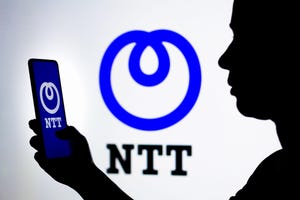
Huawei newest batch of smartphones won't be able to connect to 5G networks. The development represents a shocking turnabout for a company that just a year ago claimed a global leadership position in the sale of smartphones and wireless networking equipment.
The primary reason behind Huawei's 5G about-face is no secret: ongoing US sanctions against the Chinese vendor.
"Because of the four rounds of US restrictions over the past two years or so, 5G phones are beyond our reach and we have to go with 4G," Richard Yu, CEO of Huawei's consumer business group, said this week during the unveiling of the company's new P50 and P50 Pro smartphones, according to a CNBC report. The new gadgets instead will use Qualcomm chips to connect to 4G networks.
Not surprisingly, the absence of 5G may hinder sales of the devices. "Our latest consumer survey shows 9 in 10 Chinese smartphone consumers expect to buy 5G next time, up from 36% currently," wrote analyst Yiwen Wu with Strategy Analytics on the research firm's website. "Other than 65+ age group, 5G is mandatory across all brands. Even entry tier device buyers expect to have 5G for their next smartphone. In this regard, we are skeptical whether consumers are willing to pay a premium for a Huawei-branded 4G smartphone in 5G era."
During Huawei's media event, Yu maintained a brave face. "Our products still maintain the ultimate performance," he said. "Only a very small drop in speed will be experienced, almost negligible."
That's a noteworthy statement coming from an executive at a company that at one point just a few years ago claimed a 12-18 month lead over other 5G network equipment makers like Ericsson and Nokia. Today, Huawei's network equipment is being replaced in operator networks around the world.
In smartphones, the situation is even more stark. Just 12 months ago, Huawei overtook Samsung as the world's largest smartphone vendor. Now the company isn't even among the top five vendors globally.
Huawei has even struggled in China, its home market. "One-time market leader Huawei saw its share decline to 10% in Q2 2021 from 32% in Q2 2020," wrote analyst Ethan Qi of Counterpoint Research on the firm's website. "Vivo and OPPO now lead the market with 23% and 21% shares, respectively, followed by Xiaomi and Apple. All leading OEMs benefited from Huawei's decline and grew their market shares."
The reason, according to Counterpoint's Qi, is clear: "The market has experienced a reshuffle after the US ban on Huawei."
Huawei, for its part, continues to work to overturn US sanctions. According to Politico, the company recently hired prominent Democratic lobbyist Tony Podesta as a consultant. Podesta has remained out of the spotlight since special counsel Robert Mueller scrutinized his firm for its work with former President Trump's 2016 campaign.
Related posts:
— Mike Dano, Editorial Director, 5G & Mobile Strategies, Light Reading | @mikeddano
About the Author(s)
You May Also Like











